INTERESTING FACTS ABOUT SPAIN
This article was last updated in February 2024.
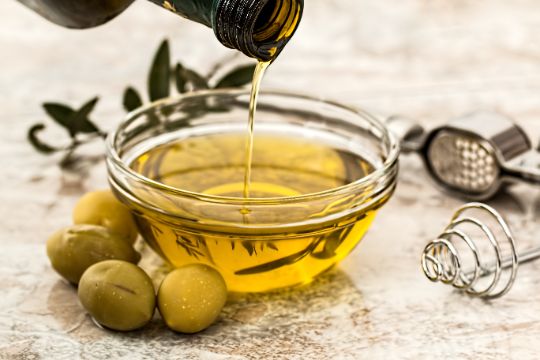
It’s the World’s largest producer of Olive Oil
When you think of Olive Oil, Italy probably comes to your mind at first, but in reality, Spain is producing about 44% of the total amount of Olive Oil in the world! Andalusia is the region that produces the most Olive Oil. This is definitely one of those facts about Spain that not many tourists know about!
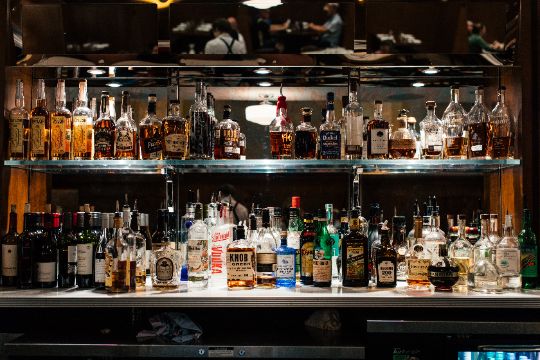
THE highest amount of bars in europe
Are you longing for that refreshing “cerveza” (beer)? You will not have any problem at all to find a nice bar. Spain has the highest amount of bars in all of Europe, and there are cafées and bars open both during the day and evening/night.
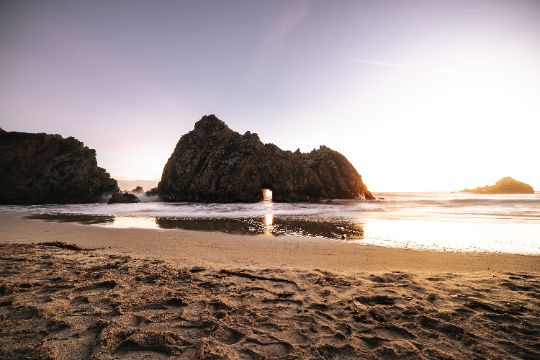
More than 8000 Kilometers of beaches
If you combine all Spanish beaches into one stretch, it would be 8000 kilometers long (approx. 4 970 miles). So, it shouldn’t come as a surprise that this is one of the most popular destinations for a sunny vacation!
Several of the best beaches in Europe can be found on the coasts of the Spanish mainland as well as the Spanish islands, such as Balearic Island, and the Canary Islands.
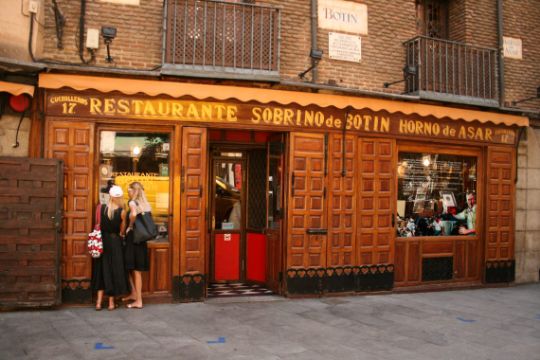
Home to the World’s Oldest Restaurant
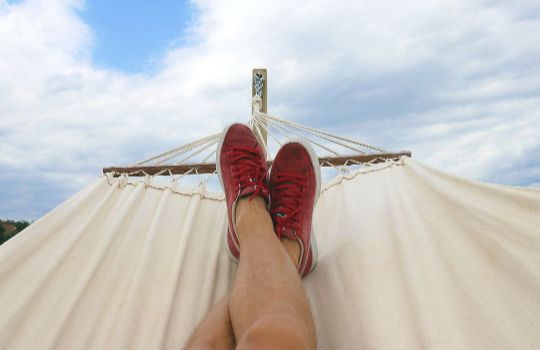
ENJOYING LIFE IS A BIG PART OF SPANISH CULTURE
The expression Mañana Mañana literally means “tomorrow tomorrow” but is commonly used as “no stress” or to express that there’s no need to worry because things will work out just fine. It’s an expression that you can feel and experience throughout the Spanish culture, where you enjoy life and relax whenever possible. It’s perhaps also why both food and wine are very important as well as the family.
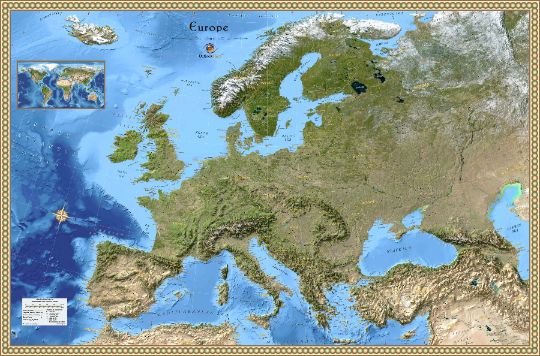
The second biggest country in the EU
Only France is bigger when it comes to countries that are members of the European Union. If you count Russia and Ukraine, Spain comes in fourth place in terms of Europe’s largest countries overall.
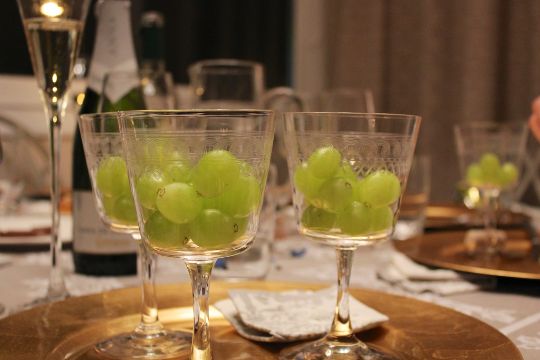
Spanish New Year’s custom TO eat 12 grapes

Spanish is the world’s second most spoken
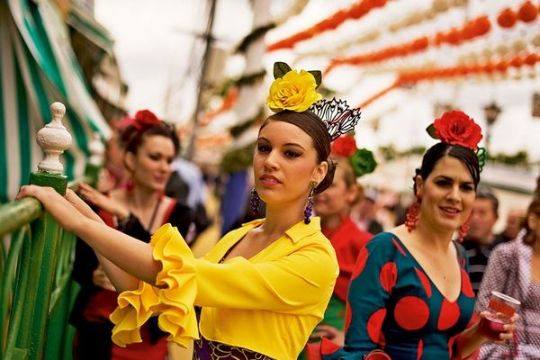
One of the world’s most diverse cultures
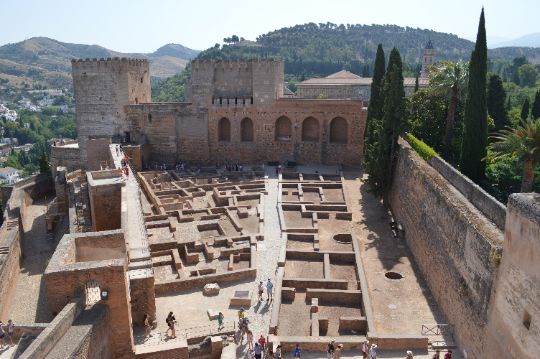
Spain has 44 UNESCO World Heritage sites
Only Italy and China has more UNESCO world heritage sites. Some of the most famous historic sites in Spain include Alhambra, Sagrada Familia, Real Alcazar, Mosque of Cordoba, Burgos Cathedral, and Tower of Hercules just to mention a few. Additionally, there are several natural world heritage sites as well, such as Teide National Park, Palmeral of Elche, Pirineos (Monte Perdido), and Las Medulas.
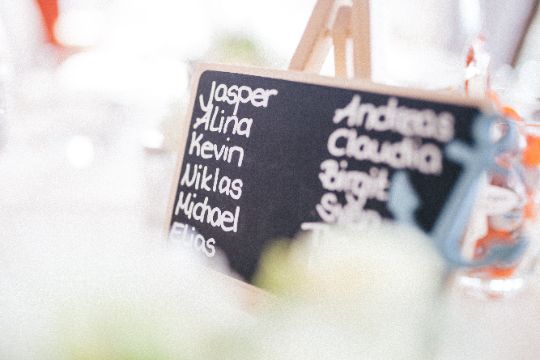
TYPICALLY each person has two surnames
There is a Spanish tradition to have two surnames. The first one is the father’s surname and the second one is the mother’s surname. As an example, it would be possible to be named Juan Gonzales Lopez or Carmen Garcia Sanchez.

Spain still has
a king
Just like Sweden and the United Kingdom, Spain has a king, which is still the head of state, but with little to no actual power over the country’s laws and regulations. The current King of Spain is Felipe VI. It’s a constitutional monarchy and the current monarch – as of 2014 – is King Felipe VI. Democracy began to take place after the Glorious Revolution of 1868 deposed then Queen Isabella II.
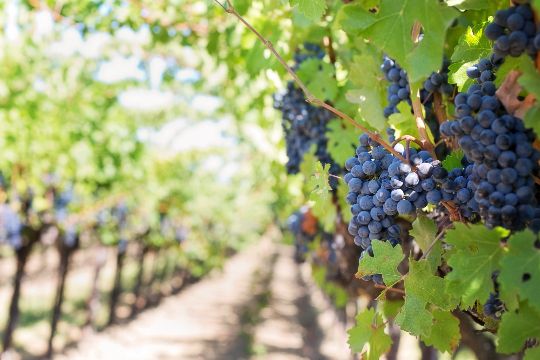
>1 million hectares are dedicated to wine
Worldwide, it’s the red wines from Spain that have become most famous, especially Rioja wines and Ribera del Duero.
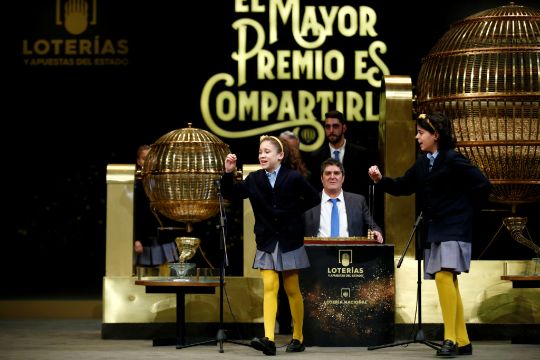
Christmas lottery HAS world’s biggest payout
The Spanish Christmas lottery is the second longest continuously running lottery in the world. The main prize is called "El Gordo" which translates to the fat one. The pupils of San Ildefonso provide the actual draw and additional prizes throughout the day. The former public servant orphans traditionally sing out the numbers.
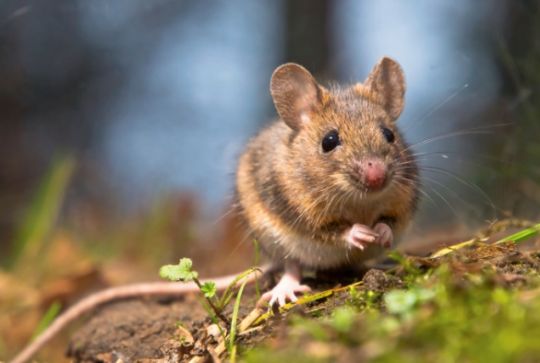
TOOTH FAIRY
RATONCITO
The Ratoncito Pérez (or Ratón Pérez, "Pérez Mouse" in English) is a figure popular in Spanish and Hispanic American cultures, similar to the Tooth Fairy, originating in Madrid in 1894. As is traditional in some English-speaking countries, when a child loses a tooth it is customary for them to place it under the pillow, so that Ratoncito Pérez will exchange it for a gift.
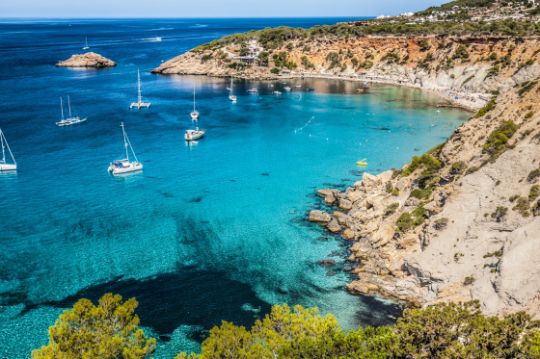
SPAIN HAS A LOAD OF ISLANDS
On any Spain itinerary, you’ll be hitting up some beaches. It’s not just the Iberian Peninsula where you’ll find Spanish territory. There are the famous Balearic Islands in the Mediterranean sea – including the very famous party island of Ibiza, of course – and then way out in the Atlantic Ocean, there are the Canary Islands.
There are also the Plazas de soberanía just off the Mediterranean coast of Morocco.
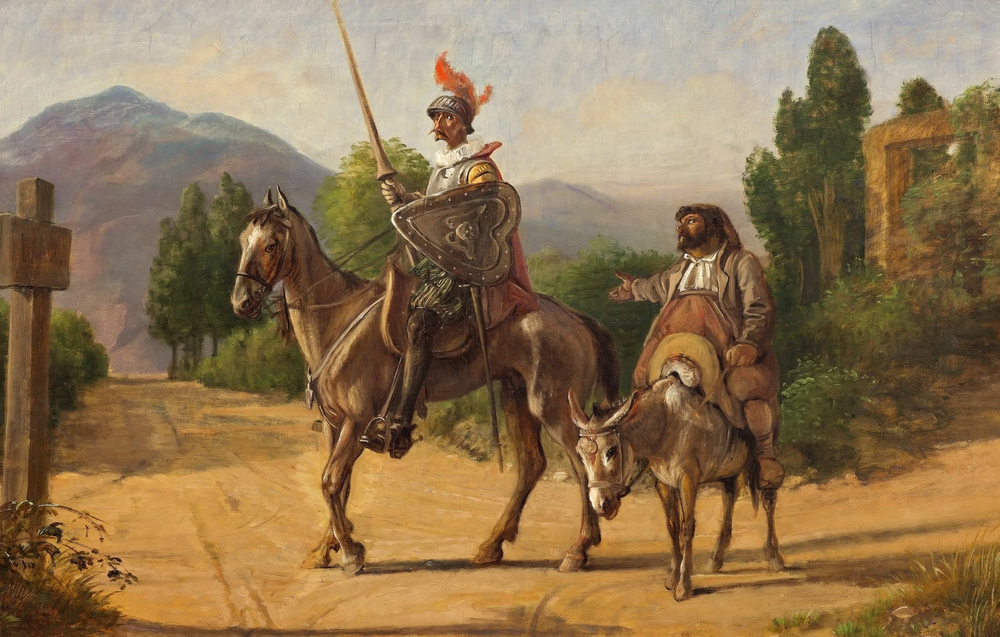
The world’s first “modern novel”
Don Quixote by Miguel de Cervantes was first published in 1605 and is the worlds first "Modern Novel" written by a Spanish author. It has been translated into 145 languages! After 400 years, the novel still boasts a major influence in modern western literature.
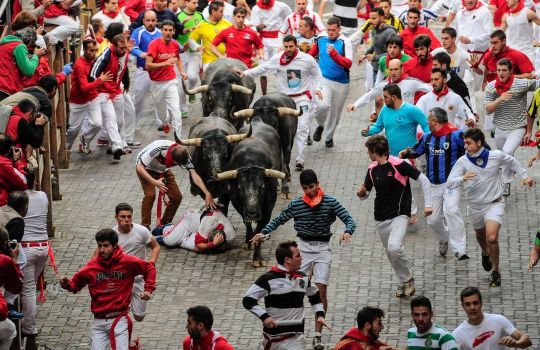
Spain hosts a number of famous festivals
Spain hosts a number of festivals, from the well known to the quirky! Two of the most well known are San Fermin (Pamplona Bull Run) held in July and La Tomatina, held in August, which is basically the world’s biggest food fight and sees thousands of locals and tourists gather to throw tomatoes at each other! Las Fallas de Valencia (Festival of Fire) is a dazzling few days of celebration filled with pyrotechnics and firework displays. Less of a festival and more of a tradition is Concurs de Castells which takes place in Tarragona, Spain. This event involves men, women and children of all ages coming together to compete by building human towers!
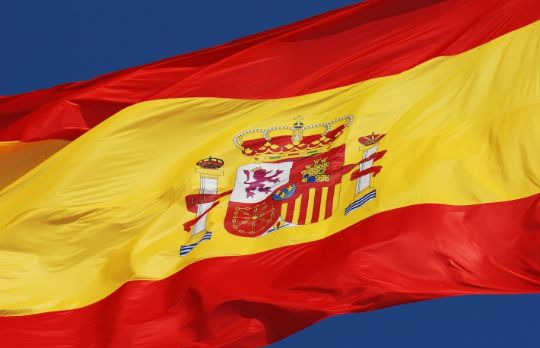
no words in the Spanish National anthem
If you are in Spain and attend an international sports match and can’t wait to sing along, you’ll be waiting a while! There are no lyrics for “La Marcha Real”, only a sweeping tune. The song is also one of the world’s oldest anthems as it was written in 1761.
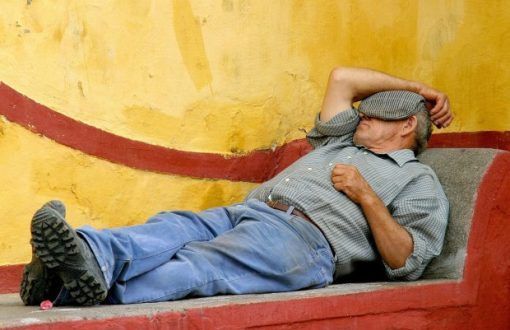
Siestas are taken seriously in Spain!
A siesta is a short nap taken in the afternoon, usually after the midday meal. In Spain, siestas are part of everyday life and it is common to find that many stores close during siesta time, usually between 2pm and 5pm. In the warmer Mediterranean climate, this midday nap allows people to rest, enjoy a break from work and take it easy during the hottest part of the day. These midday breaks could be why Spaniards have one of the highest life expectancies in the world!
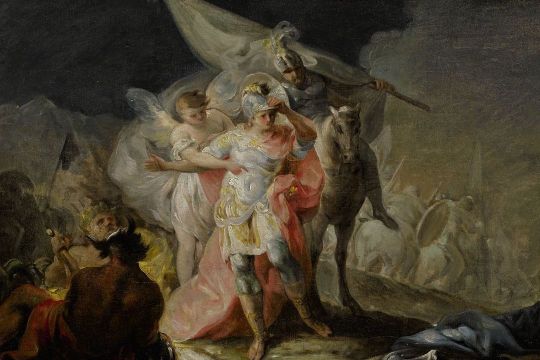
Some of the world’s greatest artists were Spanish
Spain has produced some of the world’s greatest artistic talents. Great artists like Diego Veláques, Francisco Goya, El Greco and Joan Miró all hailed from Spain. Modern masters Pablo Picasso and Salvador Dalí were also Spanish. You can visit the Dalí Theatre-Museum in Figueres, Catalonia. Fans of Picasso can visit the Picasso Museum in Barcelona.
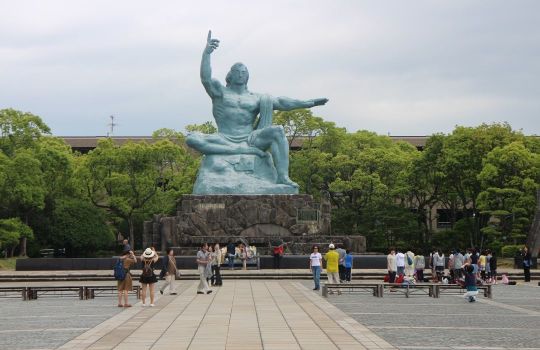
There is a town in Spain with a unique Japanese legacy
In Coria del Río, about 700 of the 24,000 locals have the surname “Japón”. This surname is a legacy of the first official Japanese envoy to Spain, including six samurai, in 1617! The delegation settled in the town near Seville and the residents took on the surname Hasekura de Japón (eventually becoming Japón over the years).
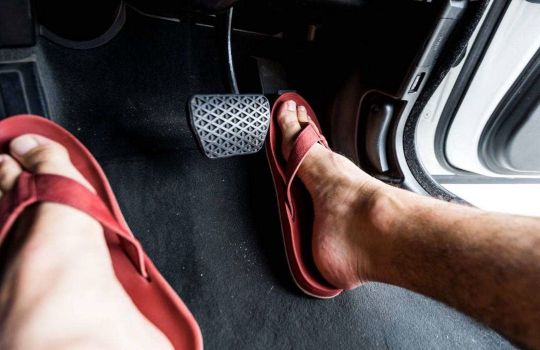
nudity is legal in Spain but driving barefoot is against the law
While public nudity may be outlawed across most of the world, there are no laws against it in Spain. Although, it is frowned upon and regional laws prohibit it in cities like Barcelona, so be careful where you choose to disrobe. However, be warned that if you decide to drive barefoot, while wearing flip flops or without a top/t-shirt (proper clothing), you may feel the cool hand of the law as these three acts are illegal. Who’d have thought?
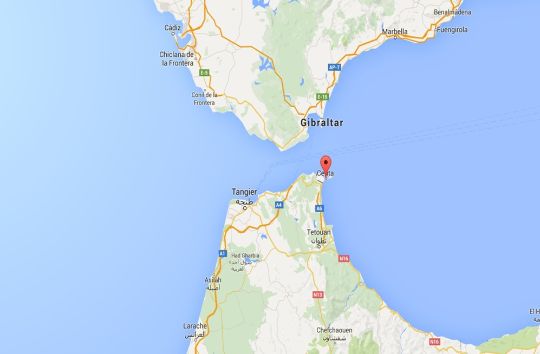
Spain Is The Only European Country WITH AN AFRICAN Border
Spain has a land border, not a sea, with an African country. That country is Morocco. How could this be? Because Spain maintains a small outpost on the African continent called Ceuta. This city has been of strategic importance since the first millennium BC, and passed through many different hands before it got to Spain in 1668.
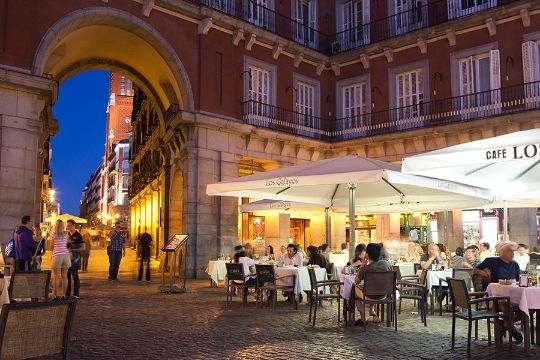
PEOPLE EAT DINNER beTWEEN 9PM and 12AM
This is one cultural difference that might take some getting used to. In Spain, dinner is a late night affair. Some restaurants will close after lunch and then open back up at 9 pm when Spaniards go out to dinner. Of course, you still have dinner whenever you want if you cook your own food. But if you plan to dine out, you may have to wait, unless you go to McDonald’s. Just in case you are wondering about lunch, this break is typically between 1pm and 3pm.
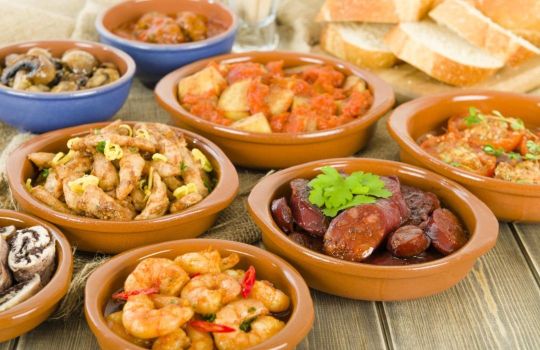
You won’t find much spicy food
Spanish people like to use simple ingredients in their food – salt, olive oil, herbs, saffron, paprika, to name a few. One ingredient you will almost never find is pepper. It’s not like Mexican food at all! Spaniards don’t eat spicy food so don’t go looking for hot wings or hot Cheetos at the supermarket! Even if you’re going for ‘ethnic’ food, like Indian or Chinese, you will find that the dishes labeled picante (spicy) are often mild or not spicy at all.
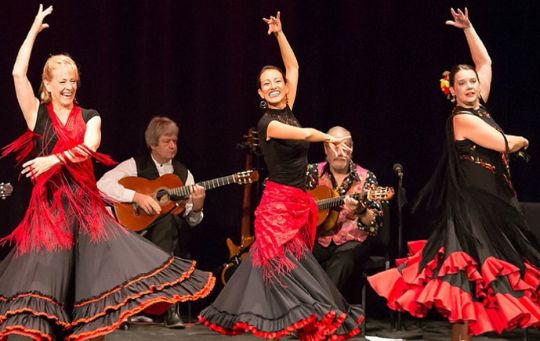
Flamenco is not the national dance
Due to the popularity of Flamenco, people often mistakenly believe it is the national dance of Spain. It’s not! Flamenco is a regional dance from Andalusia created by the gitanos (gypsies). It is heavily influenced by Near Eastern styles of dance that the Moors who ruled Spain for 800 years brought with them. You can see good Flamenco in Spain, however the experience in Andalusia is on another level. They live and breathe Flamenco down there!
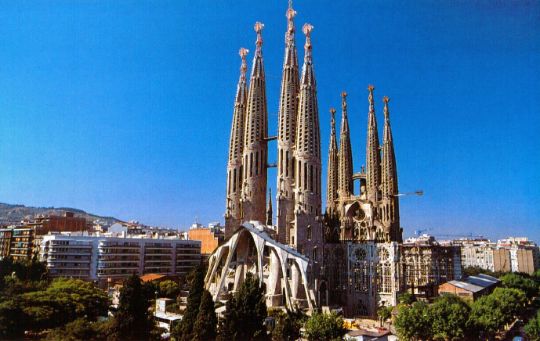
La Sagrada Família under construction for 130+ years!
Despite not being completely built, La Sagrada Família is one of the most iconic buildings in Spain, with 2.8 million visitors annually. Antoni Gaudí’s masterpiece is an unfinished Roman Catholic basilica located in Barcelona. The church is a shining example of Gaudí’s fantastical architectural style which began construction in 1882 and continues today. It’s hoped that it will be complete by 2026 (on the centenary of Gaudí’s passing), however construction has been delayed by Covid-19.
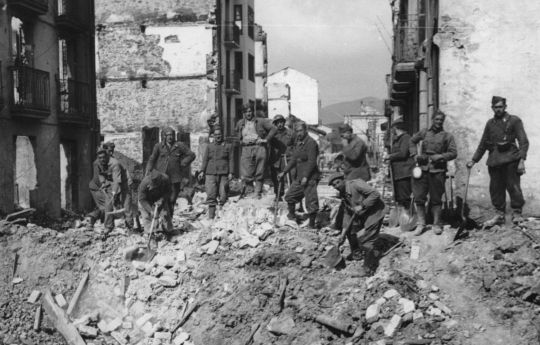
The Civil War AND FRANCO WERE significant eventS in Spain’s history
The Spanish Civil War (1936-1939) was a conflict that took place in Spain. It began when the army, led by General Francisco Franco, rose up against the government. The war ended with the victory of the Nationalists, and Franco became the dictator of Spain. Franco ruled until 1975 as a dictator, assuming the title Caudillo, his legacy in history remains controversial, as the nature of his dictatorship changed over time. His reign was marked by both brutal repression, with tens of thousands killed, and economic prosperity, which greatly improved the quality of life in Spain.
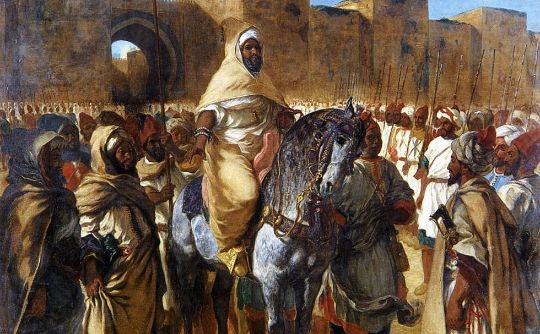
You can see Moors influence from more than a millennia ago
Unless you know your Spanish history, you may not know this fun fact about Spain. It is recognized that the Moors controlled large parts of Spain from the 8th to the 15th century. Even though it has been more than 500 years since they were in control, you can still see their influences. When you visit Spain, notice the mosaic tiles used as decoration in architecture design and music.
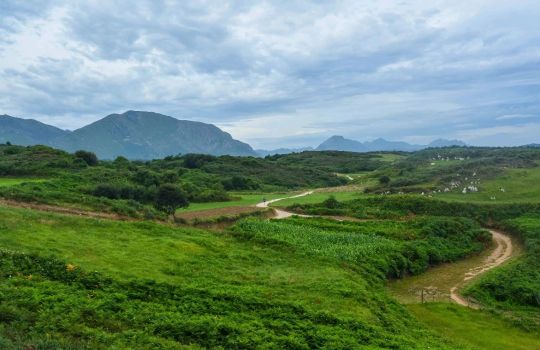
Religious pilgrims and adventurers will visit the Camino de Santiago
It can take a person 30 days to complete the full Camino de Santiago, which stretches nearly 500 miles. Many people will just do little day trips. For those who want to do the full trip, plenty of hostels and hotels are available on the way. In the Camino de Santiago, you can witness some of the most famous landmarks in Spain.
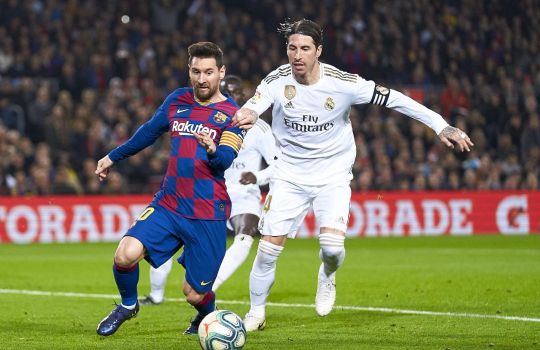
The rivalry between Real Madrid and FC Barcelona has lasted centuries
Real Madrid and FC Barcelona are known as two of the most popular futbol teams in the world. Both teams have been playing for nearly 120 years, with their rivalry being just as long! If you can’t get a match day ticket, there are stadium tours for both Camp Nou and the Santiago Bernabeu.
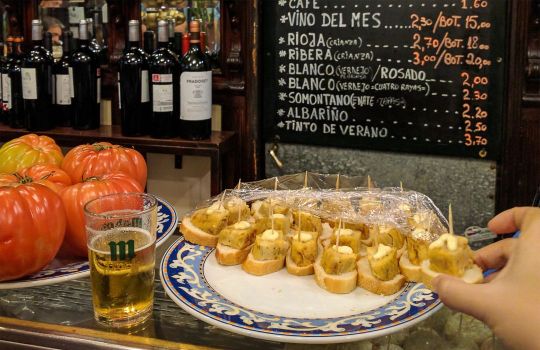
Buy a drink and enjoy A FREE "tapas”
It is very common to go out with friends and enjoy a drink after work or during weekends. If you order a drink in many bars (typically in Granada), you will also be served a small dish, known as tapas. These can be any popular snacks in Spain. While it seems normal to have finger food with drinks, this tradition actually stems from bar-goers trying to cover their drinks with a plate, to avoid flies from getting in.
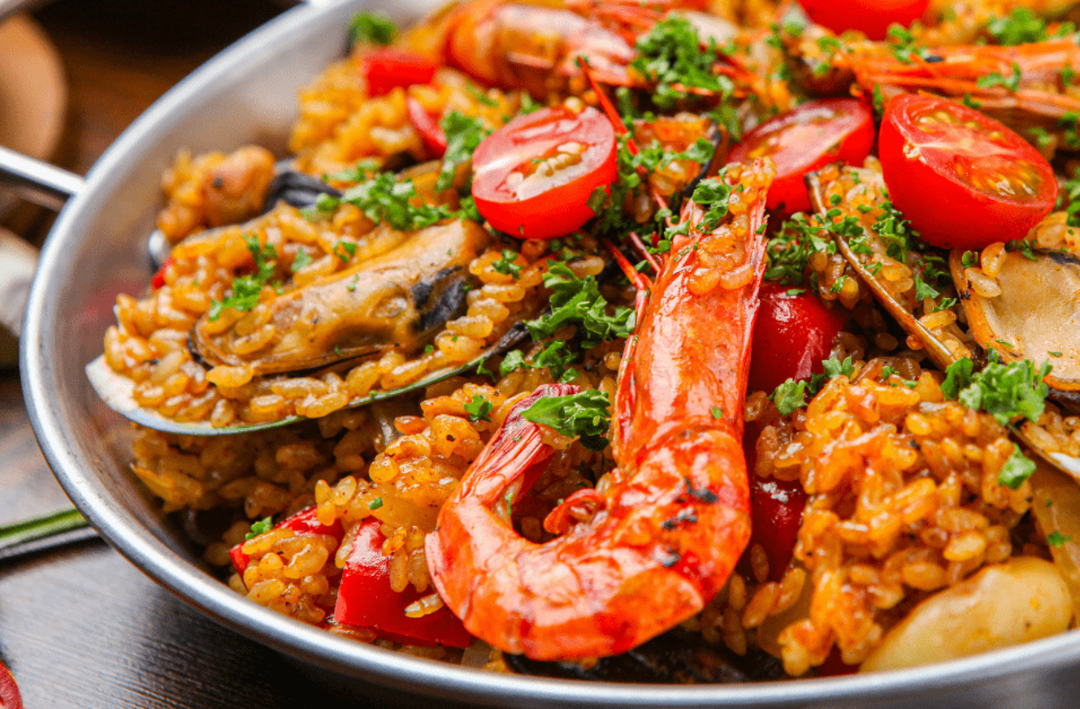
The national dish of Spain is PaellA
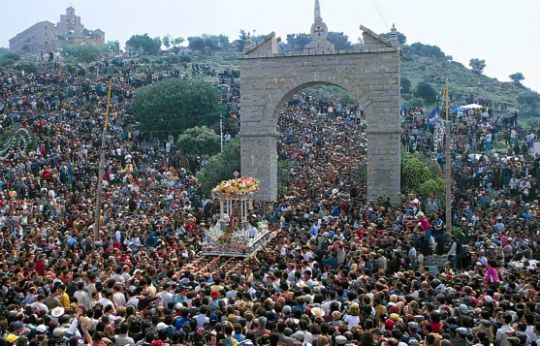
CELEBRATE AT THE WORLD’S OLDEST FIESTA
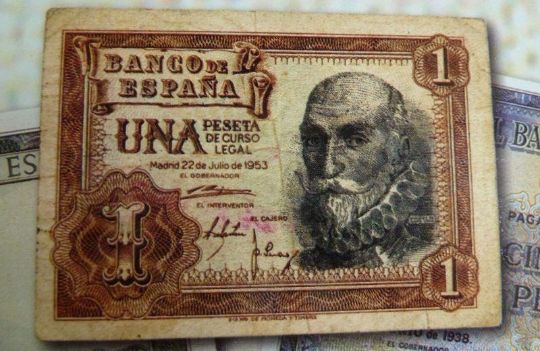
Peseta WAS the physical CuRRENCY UNTIL 2002
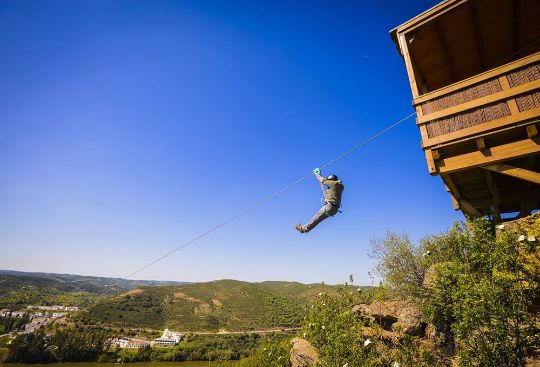
YOU CAN CROSS TO ANOTHER COUNTry ON A ZIPWIRE
Spain and Portugal have been linked by a zip wire, meaning thrillseekers can cross from one country to another by flying through the air at speeds of up to 50mph. Adrenaline junkies board in Sanlucar de Guadiana in Andalucia, Spain, before whizzing down the line and landing across the Guadiana River in Alcoutim, Portugal. It only takes 60 seconds to cross the border on this Zipline. It is built on a river, 150 meters wide, between the two countries.

SHEPHERDS CREATED CHURROS WHICH MAY HAVE BEEN INSPIRED BY SHEEP
One of the most highly-debated facts is where churros came from. Found almost anywhere in Spain there’s no actual proof that churros are from Spain. One popular theory about the origins of churros suggests that these sweet treats were invented by nomadic shepherds living in the Spanish mountain ranges. Since there were often no bakeries there, the shepherds used a frying pan to make their own pastries. In fact, the word “churros” was allegedly inspired by a breed of sheep called the “Navajo-Churro” on the Iberian Peninsula, whose curved horns look exactly like the crispy treats we know and love today!
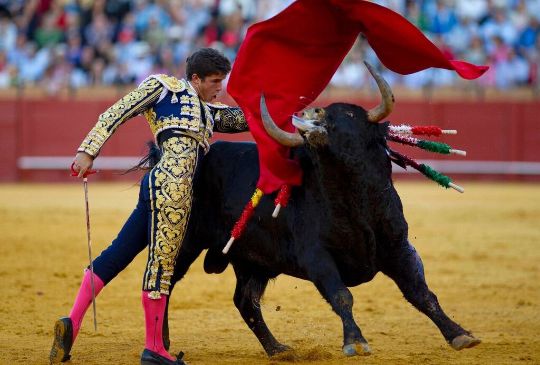
ONLY 29% of the SPANISH POPULATION SUPPORTED bullfighting in 2013*
Bullfighting is a cultural event, and is deeply tied to the Hispanic culture and identity. Bullfighting is not a competition but rather a highly ritualized event, and has been popular in Spain for thousands of years. Bullfights (corridas) are considered either a contest of art and skill or a cruel sport. Although slowly more places ban bullfights, bullfighting still takes place. Experts consider that modern Spanish bullfighting started in 1726 when Francisco Romero, a significant matador from Ronda, introduced the use of the sword (estoque) and the famous red cape (muleta) into the bullfight.
*IPSOS poll
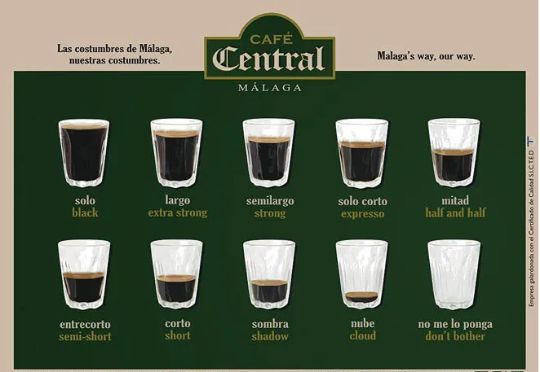
10 DIFFERENT WAYS You CAN ORDER COFFEE IN MALAGA
- un café solo: black
- un café largo: extra strong
- un semilargo: strong
- un solo corto: espresso
- un mitad or “sol y sombra”: literally, “half” or “sun and shade.” Half milk, half coffee
- un entrecorto: semi short
- un corto: short—more or less the same as an espresso shot
- un sombra: literally, “shade” or “shadow,” used to refer to the amount of coffee vs. milk. Here, there is about a third of the glass coffee and two thirds milk.
- un nube: literally, “cloud.” This cute name, a lot of milk and just a splash of coffee.
- no me lo pongas: This last one is actually a joke—it means “don’t give me anything.” In other words, if you don’t want a “nube,” you might as well not bother having coffee!
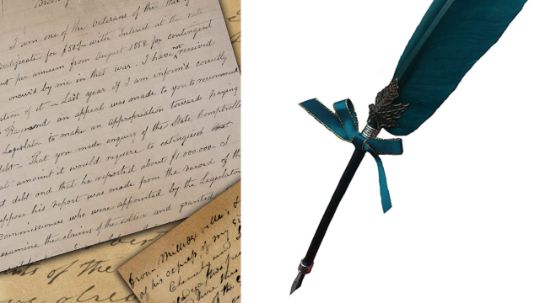
THE QUILL PEN WAS CREATED IN SEVILLE
A quill is a writing tool made from a moulted flight feather (preferably a primary wing-feather) of a large bird. Quills were used for writing with ink before the invention of the dip pen, the metal-nibbed pen, the fountain pen, and, eventually, the ballpoint pen. In the 6th century AD (1,500 years ago) after centuries of using the reed pen, the quill pen was created in Seville, Spain. The quill pens were made from bird feathers like swans, turkeys, and geese (the cheaper ones were made out of goose feathers while the expensive one from swans).
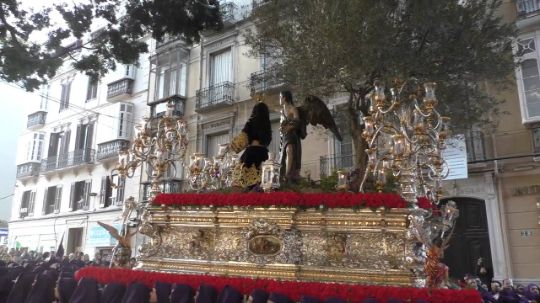
1 TON FLOATS CARRIED BY 40-50 ADULTS IN APRIL
Semana Santa (Holy Week) commemorates the Passion of Christ in the Catholic tradition and takes place the week directly before Easter. The biggest celebrations occur in Andalucía. A religious float "paso", is carried on the shoulders of 40-50 adults called Nazarenos and organized in 'cofradias' (brotherhoods). A float can weigh over 1,000 kilograms (1 ton). The color purple plays a significant role in the Christian religion during Semana Santa, it is related to suffering. The float shown above is called "La Huerta" and has a real life Olive Tree!
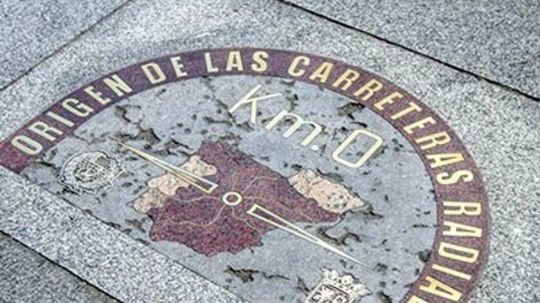
MADRID IS IN THE PHYSICAL CENTER OF THE COUNTRY
Plaza de la Puerta del Sol in Madrid "Gate of the Sun", is the exact centre of the country. On the footpath outside the Casa de Correos is a plaque marking Spain’s Kilometre Zero, the point from which Spain’s network of roads is measured. On the evening of the 31st of December, all televisions in Spain light up with the image of the famous clock to celebrate New Years. The plaza is also were the proclamation of the Second Republic in 1931 was recognised.
what does help at hand spain do?
Immigration, Visa and Residency Experts. Administrative services if you are moving to, or already living in Spain. We understand how daunting things can be. Overcome the bureaucracy, red-tape and language challenges Let us help and lead you every step of the way. Dream, Make it Happen, Relax. Learn more about our services.
© 2024 Help At Hand Spain, All rights reserved.
